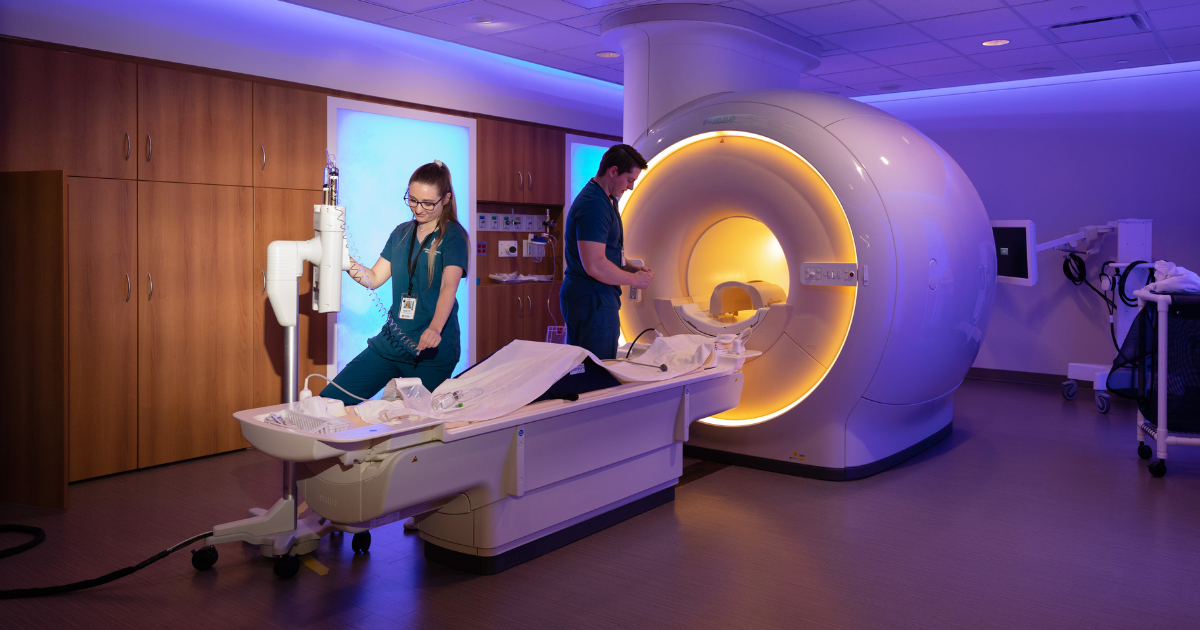Can MRIs help with unnecessary treatment for prostate cancer?

A recent study in the New England Journal of Medicine suggests that performing an MRI scan in the workup for an elevated prostate-specific antigen blood test (PSA) screening for prostate cancer can reduce prostate cancer diagnoses by more than half by deferring biopsy for patients with a reassuring MRI.
“The use of prostate MRI scans for elevated PSAs has grown over the last five to 10 years,” says Jared Schober, MD, Nebraska Medicine urologist. “This study provides evidence that biopsy may not be necessary in carefully selected patients, which can help avoid the over-diagnosis of nonlethal prostate cancers. The study confirms that MRI is a powerful tool for improving detection of clinically significant prostate cancer, and in select cases, can avoid biopsy altogether.”
Prostate cancer is the most common cancer among men in the United States. While some prostate cancers can be very severe, even fatal, the majority of prostate tumors grow slowly, and some may not require treatment at all. The dilemma as to when to perform biopsies and the potential for overtreatment has been a point of controversy and concern in the medical community for many years, as treatment can result in erectile dysfunction and urinary incontinence. Yet, there remains a focus on detecting potentially lethal cancer where patients would benefit from lifesaving treatment.
The use of MRI following an elevated PSA provides several benefits:
- Helps determine the size of the prostate.
- Provides a roadmap of the prostate and helps identify areas of concern that can be targeted during biopsy to improve detection rates.
- Can help determine if a tumor is locally advanced (growing into nearby structures).
- Provides a score or likelihood of significant clinically concerning cancers.
- Aids in treatment planning for surgery or radiation if cancer is present.
While it has been well documented that MRIs are highly effective at detecting clinically significant prostate cancer, they can still miss up to 25% of cancers if a biopsy is not performed, says Dr. Schober. Therefore, the decision to defer prostate biopsy should only occur after a discussion between a patient and their urologist regarding the benefits and risks of biopsy.
“The risks associated with prostate biopsy have decreased over the last decade with the advent of improved antibiotic coverage for transrectal biopsy or utilization of transperineal prostate biopsy (a biopsy technique shown to decrease the risk of rectal bleeding and biopsy-associated infection),” says Dr. Schober. “Nonetheless, research continues to focus on identifying men who have a low risk for the diagnosis of clinically significant prostate cancer and thus can avoid biopsy altogether.”
Prostate screening is recommended for men ages 55 to 69 and may be continued after age 70 in healthy men with a 15-year or more life expectancy if recommended by your doctor. Screening at an earlier age may be recommended in men who are at higher risk for cancer, such as men of African or Caribbean descent and/or those with a strong family history of prostate cancer.
Keeping up with your doctor’s recommended schedule for prostate screenings is essential, notes Dr. Schober. According to the American Cancer Society, the prostate cancer death rate declined by about half from 1993 to 2013, most likely due to earlier detection and advances in treatment.
Talk to your health care provider about the benefits and risks of a prostate cancer screening. If you need a primary care provider, start here.







